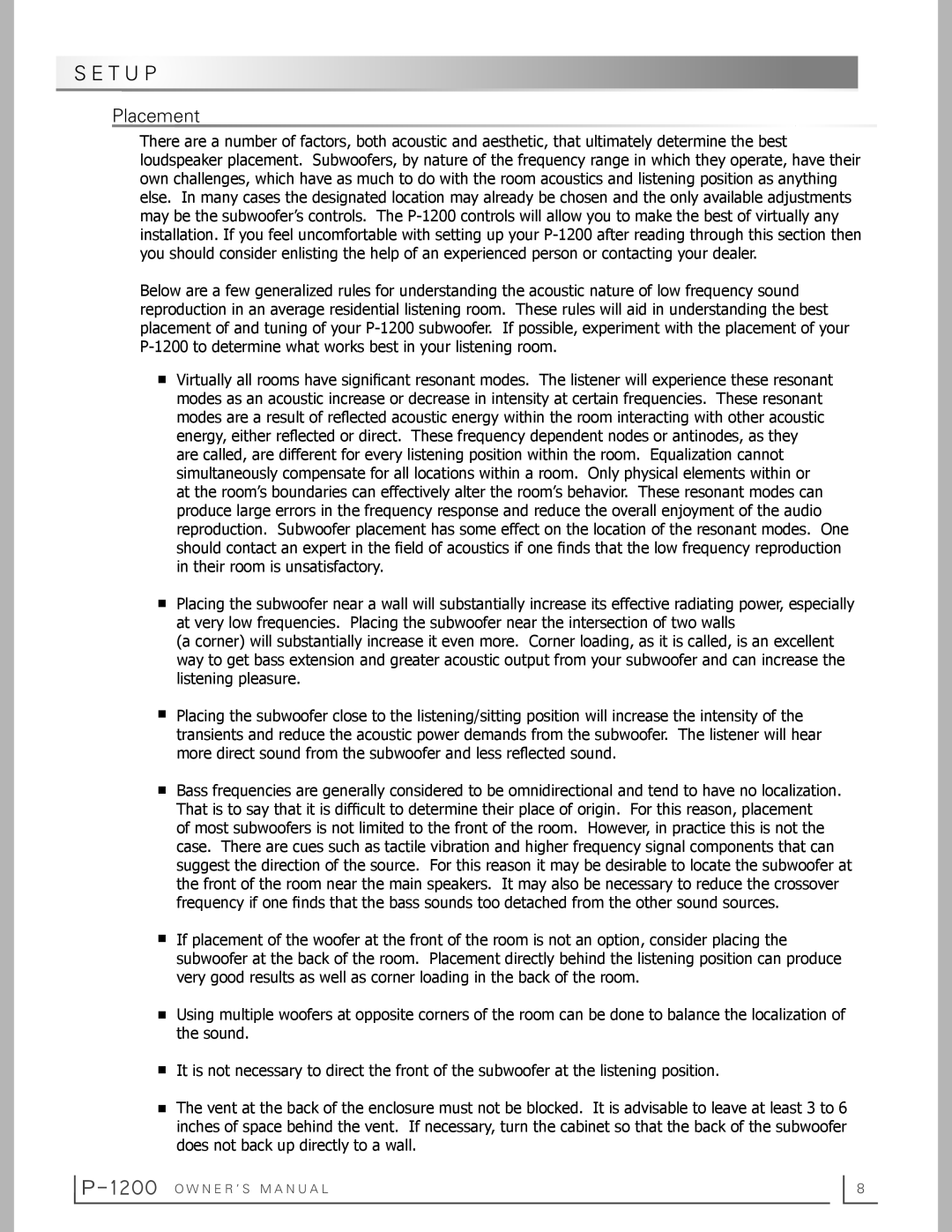P-1200 specifications
The Preference Audio P-1200 is an innovative audio amplifier designed for audiophiles seeking a perfect blend of power, versatility, and exceptional sound quality. With its robust construction and modern features, the P-1200 stands out in a competitive market, delivering a truly immersive listening experience.One of the primary features of the P-1200 is its impressive power output. Boasting a high output of 1200 watts, the amplifier is capable of driving a wide range of speaker configurations, making it suitable for both casual listeners and serious audio enthusiasts. This abundant power contributes to dynamic sound reproduction, excellent bass response, and crystal-clear highs, allowing users to enjoy every nuance of their favorite music.
The P-1200 employs advanced Class D amplification technology, which combines high efficiency with minimal distortion. This not only ensures that the amplifier runs cooler, allowing for extended listening sessions without significant heat buildup, but also helps to maintain audio fidelity even at high volumes. The result is a rich and detailed sound profile that remains transparent and engaging.
Equipped with various connectivity options, the Preference Audio P-1200 supports both analog and digital inputs, including XLR, RCA, and optical connections. This versatility enables seamless integration with a range of audio sources, such as high-resolution digital music players, CD players, and streaming devices. Additionally, the amplifier features Bluetooth connectivity, offering the convenience of wireless streaming from smartphones and tablets, catering to the demands of modern audio enthusiasts.
The P-1200 also includes advanced protection circuitry to safeguard both the amplifier and connected speakers from potential damage. This intelligent feature monitors temperature, current, and voltage levels, automatically adjusting performance parameters as needed to prevent overheating or overloading.
Furthermore, the P-1200 is designed with user-friendliness in mind. The intuitive front panel provides easy access to control and settings, ensuring that users can quickly adjust parameters according to their preferences.
In conclusion, the Preference Audio P-1200 is a powerhouse of an amplifier that combines cutting-edge technology with exceptional performance characteristics. Its blend of power, efficiency, versatility, and user-centric design makes it an excellent choice for anyone looking to elevate their audio experience. Whether for home theater setups, music production, or personal listening, the P-1200 ensures outstanding sound quality and reliable performance every time.

